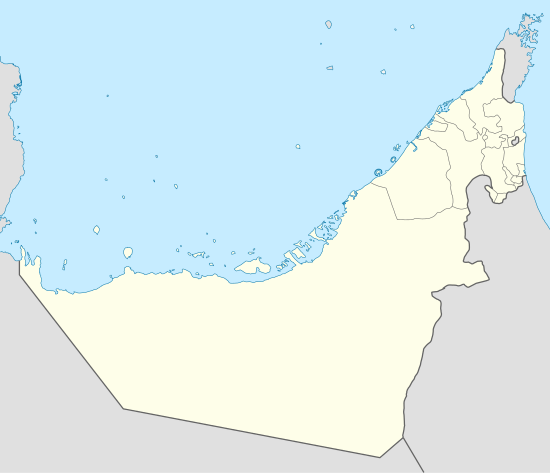Shimal
Shimal is the name of a settlement in Ras Al Khaimah associated with the Shihuh tribe of the Northern UAE and Oman. It is also the location of an important archaeological site dating back to the Umm Al Nar culture (2,500-2,000 BC). Tombs excavated and surveyed at Shimal include both the round Umm Al Nar type and the barrow tombs typical of the 'Wadi Suq' era. Grave goods found at Shimal have included large finds of pottery as well as beads and objects providing a link to the Harappan Indus Valley Civilisation.[1]
Shimal | |
|---|---|
 Shimal | |
| Coordinates: 25°49′5″N 56°1′54″E | |
| Country | United Arab Emirates |
| Emirate | Ras Al Khaimah |
| Elevation | 134 m (442 ft) |

The burial grounds at Shimal consist of at least 250 graves, some of which have been found to encompass over 300 burials. Many of the tombs were re-used.[2] The nearby site of Seih Al Harf mirrors many of the finds at Shimal.
The excavations at Shimal, principally those of the mid-1980s by a team from the University of Göttingen in Germany, are significant as they provided early evidence of the 'Wadi Suq' period, including finds of pottery, soft-stone vessels, bronze and copper weapons and beads which came to be regarded as typical of the period c. 2000-1300 BC in the UAE.[3]
References
- Potts, Daniel T. (1988). Araby the Blest: Studies in Arabian Archaeology. Museum Tusculanum Press. ISBN 9788772890517.
- "Shimal Archaeological Site". www.enhg.org. Retrieved 2017-12-05.
- UAEINTERACT. "UAE Interact, United Arab Emirates information, news, photographs, maps and webcams". www.uaeinteract.com. Retrieved 2017-12-05.
